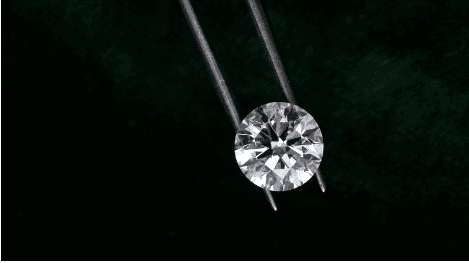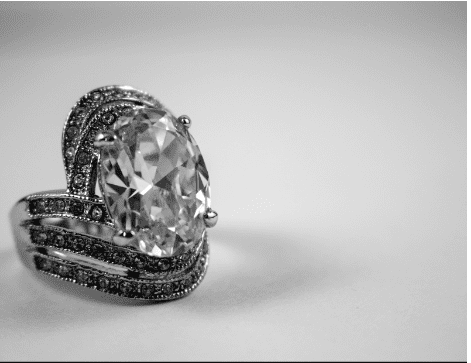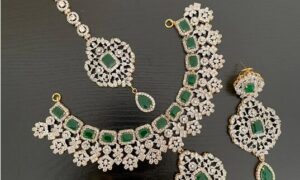The jewelry industry has long been associated with glamour, luxury, and romance. However, beneath the sparkling surface lies a darker side riddled with ethical concerns. From the environmental impact of mining to the exploitation of workers in the supply chain, the jewelry industry faces challenges that are increasingly coming to the forefront. This article will explore the role of moissanite as a sustainable and fair trade solution to these issues, highlighting the importance of dopting sustainable practices and supporting fair trade in the industry.
The Dark Side of Traditional Jewelry Practices
The Environmental Impact Of Diamond And Gemstone Mining
Mining diamonds, gemstones, and precious metals for use in jewelry has significant environmental consequences. Large-scale mining operations often involve the removal of vast quantities of soil and rock, leading to deforestation, soil erosion, and loss of biodiversity. Moreover, toxic chemicals such as cyanide and mercury in the extraction process contaminate water sources and pose severe risks to human health and wildlife.
Human Rights Issues And Labour Exploitation In The Jewelry Supply Chain
The jewelry industry’s supply chain is notorious for exploiting workers, particularly in developing countries. Miners often work in hazardous conditions with little to no safety measures, putting them at risk of accidents and long-term health issues. Child labour is also prevalent in the industry, with children as young as five working in mines or polishing gemstones. Workers in the jewelry supply chain are frequently underpaid, denied fundamental labour rights, and subjected to forced labour or bonded labour.
The Problem With Conflict Diamonds And Other Unethical Jewelry Sources
Conflict diamonds, also known as blood diamonds, are mined in war zones and sold to finance armed conflicts against governments. The sale of these diamonds has funded brutal wars and human rights abuses in Africa. In addition to diamonds, other gemstones, such as rubies, sapphires, and emeralds, have been linked to armed groups and illegal trading practices. The trade of these unethically sourced gemstones poses a significant ethical concern for consumers and the industry.
Moissanite: A Sustainable and Ethical Alternative
The Origin And Properties Of Moissanite
Moissanite is a gemstone made of silicon carbide, first discovered in 1893 by French chemist Henri Moissan. Its natural form is extremely rare but can be created in a laboratory using advanced techniques. Moissanite closely resembles diamonds in terms of brilliance, fire, and durability but comes at a fraction of the cost, making it an attractive alternative for both consumers and jewellers.
How Moissanite Production Reduces Environmental Impact
The production of moissanite is an eco-friendly process, as it involves lab-grown techniques that do not require mining. Consequently, the negative environmental impacts associated with traditional mining practices, such as deforestation and water contamination, are avoided. Additionally, lab-grown moissanite consumes significantly less energy and resources than mining diamonds, further reducing its environmental footprint.
Labor Practices And Fair Trade Considerations In Moissanite Production
As moissanite is produced in a controlled laboratory environment, the risk of labour exploitation and human rights abuses commonly associated with the traditional jewelry supply chain is significantly reduced. Workers in moissanite production facilities are typically offered fair wages, safe working conditions, and access to benefits. This ethical approach to labour practices positions moissanite as a viable solution to the issues plaguing the jewelry industry.
The Growing Popularity Of Moissanite In The Jewelry Industry
The demand for moissanite has been steadily increasing as consumers become more aware of the ethical issues in the jewelry industry and seek sustainable alternatives. Its affordability, durability, and ethical production make moissanite an attractive choice for engagement rings, wedding bands, and other jewelry items, further propelling its growth in the market.
Embracing Sustainable Practices and Fair Trade in the Jewelry Industry
How Consumers Can Make A Difference By Choosing Ethical Jewelry Options
Consumers can drive change in the jewelry industry by consciously choosing ethical alternatives like moissanite. By supporting brands prioritizing sustainable practices and fair labour conditions, consumers can send a strong message to the industry, encouraging a shift towards responsible sourcing and production.
The Role Of Jewellers In Promoting Sustainable Practices And Fair Trade
Jewellers are responsible for educating their customers about the ethical implications of their jewelry choices and offering sustainable alternatives such as moissanite. By ensuring transparency in their supply chains and adhering to fair trade principles, jewellers can help foster a more responsible industry.
Concluding Thoughts on Moissanite as a Sustainable and Ethical Solution for the Jewelry Industry
The jewelry industry has long grappled with ethical concerns, ranging from environmental degradation to human rights abuses. Moissanite presents a viable and appealing alternative that addresses these issues, offering a sustainable and ethically produced gemstone without compromising beauty and durability. As consumers, jewellers, and the industry recognize the importance of sustainable practices and fair trade, moissanite’s popularity is poised to grow even further. By embracing alternatives like moissanite and supporting brands committed to ethical sourcing and production, we can work together to transform the jewelry industry and pave the way for a more sustainable and fair future.





































